Efforts to find sustainable solutions in architecture are no longer limited to land-based development, but now also extend to coastal and marine environments. In response to this growing challenge, the Undergraduate Architecture Program at Universitas Gadjah Mada (UGM) has partnered with the University of Nottingham Malaysia (UNM) and Universiti Teknologi PETRONAS (UTP) to offer a collaborative elective course titled Floating Architecture. The course was held during the even semester of the 2024/2025 academic year, and was designed to broaden students’ perspectives on the potential for human life at sea, and how architecture can contribute sustainable solutions in this context.
Two distinguished experts from UGM’s partner institutions played an active role in delivering the course: Prof. Ir. Dr. Mohd. Shahir Liew (Vice Provost of Research and Knowledge Exchange, UNM) and Assoc. Prof. Ts. Dr. Noor Amila Wan Abdullah Zawawi (Senior Director of Technology Research Excellence, UTP). Their expertise in offshore structural dynamics and decommissioning of offshore facilities laid the foundation for a deeper understanding of floating architecture. From UGM, Dr. Yani Rahmawati, S.T., M.T. served as the internal facilitator, ensuring that the learning process remained contextual and effective for students.
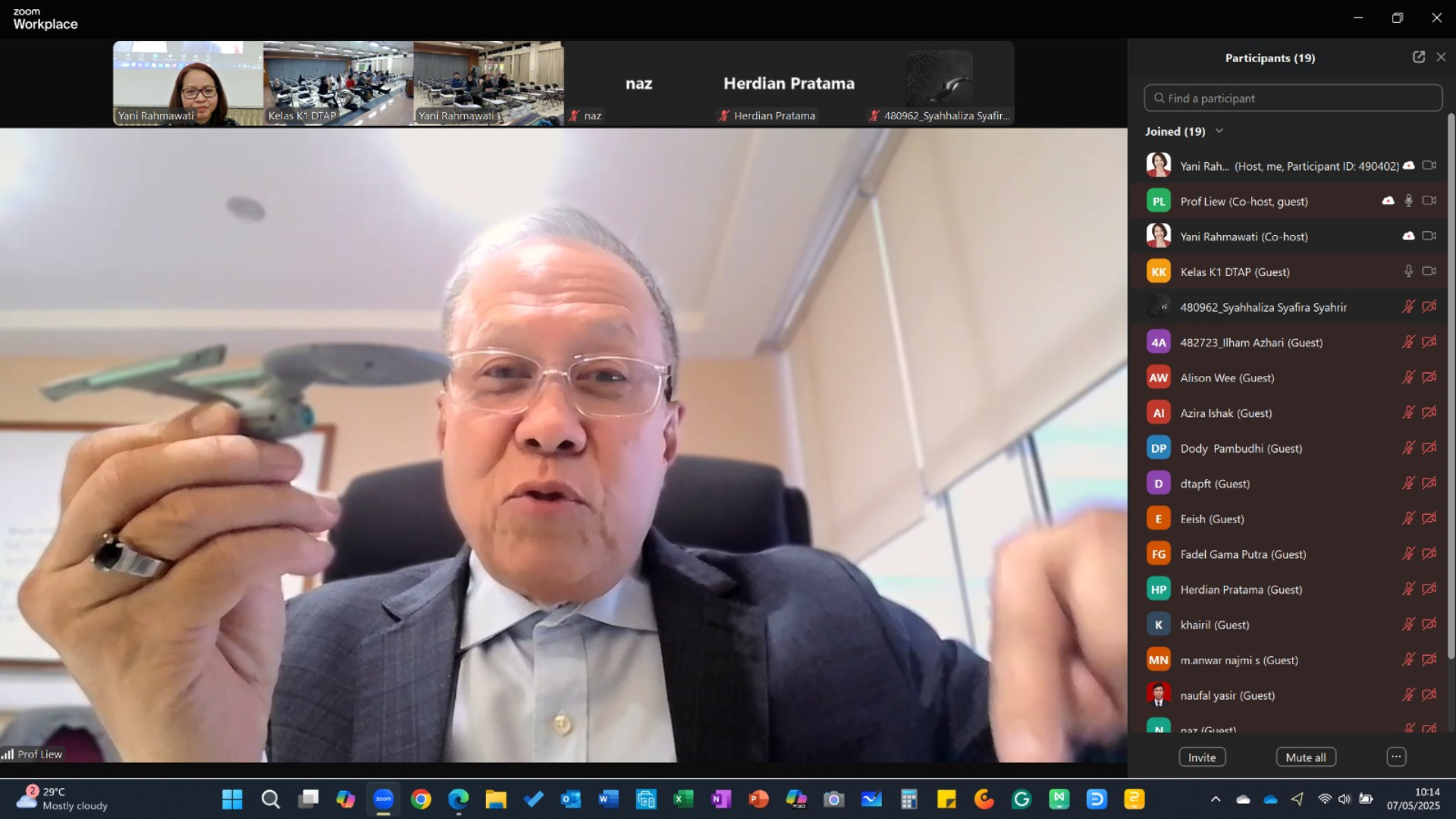
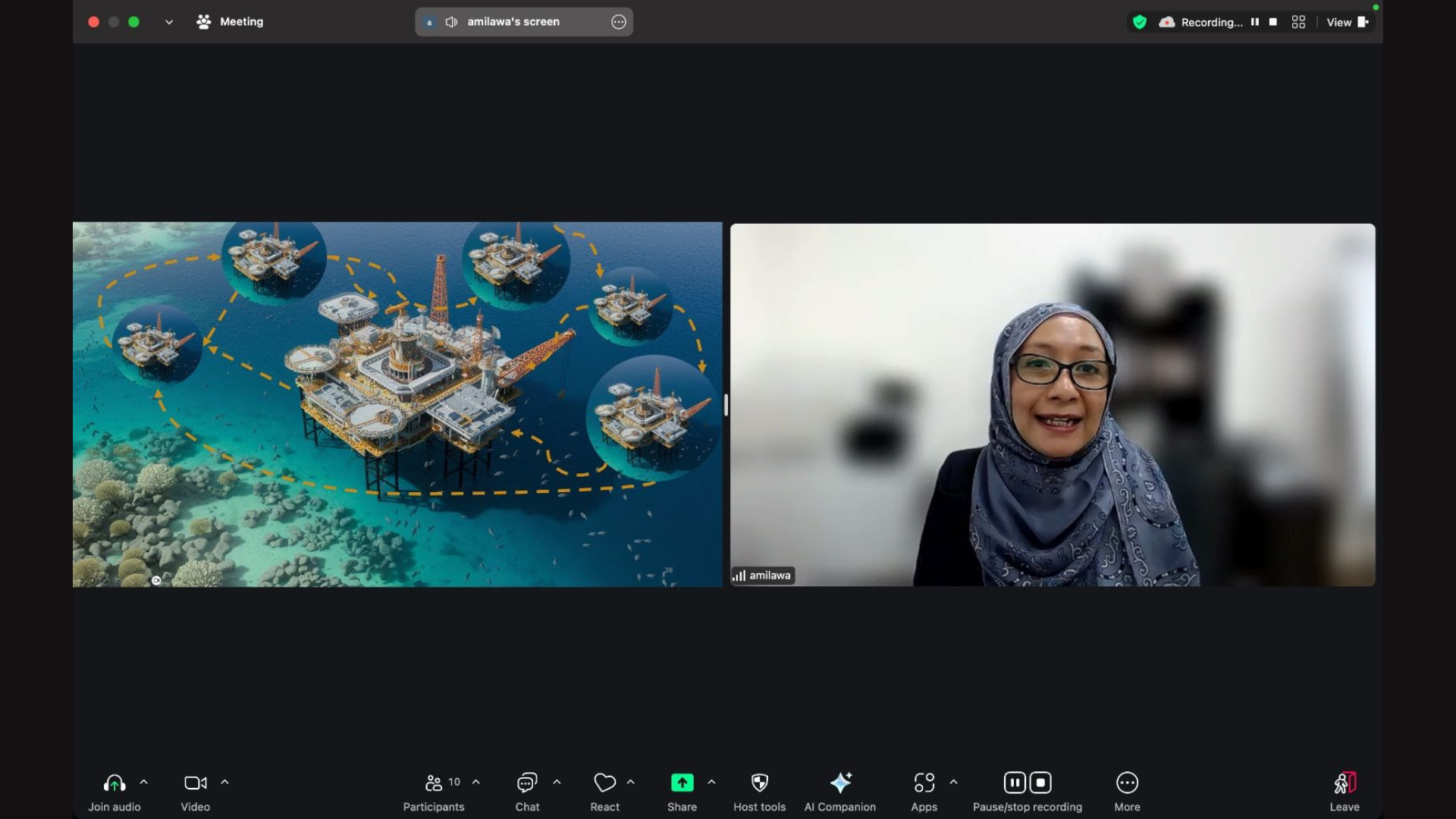
Over the course of 16 weeks, delivered in a hybrid format, students were introduced to the fundamental concepts of floating architectural design—including structural systems, materials, waste management, utilities, and Health, Safety, and Environment (HSE) considerations. The course facilitated students to recognise the characteristics of coastal and offshore environments that influence the resilience of floating architecture design. The course also explored principles of adaptive re-use, which encourages repurposing existing structures as a strategy for sustainable design. Through this approach, students gained not only theoretical knowledge but also practical and environmental insights relevant to real-world conditions.
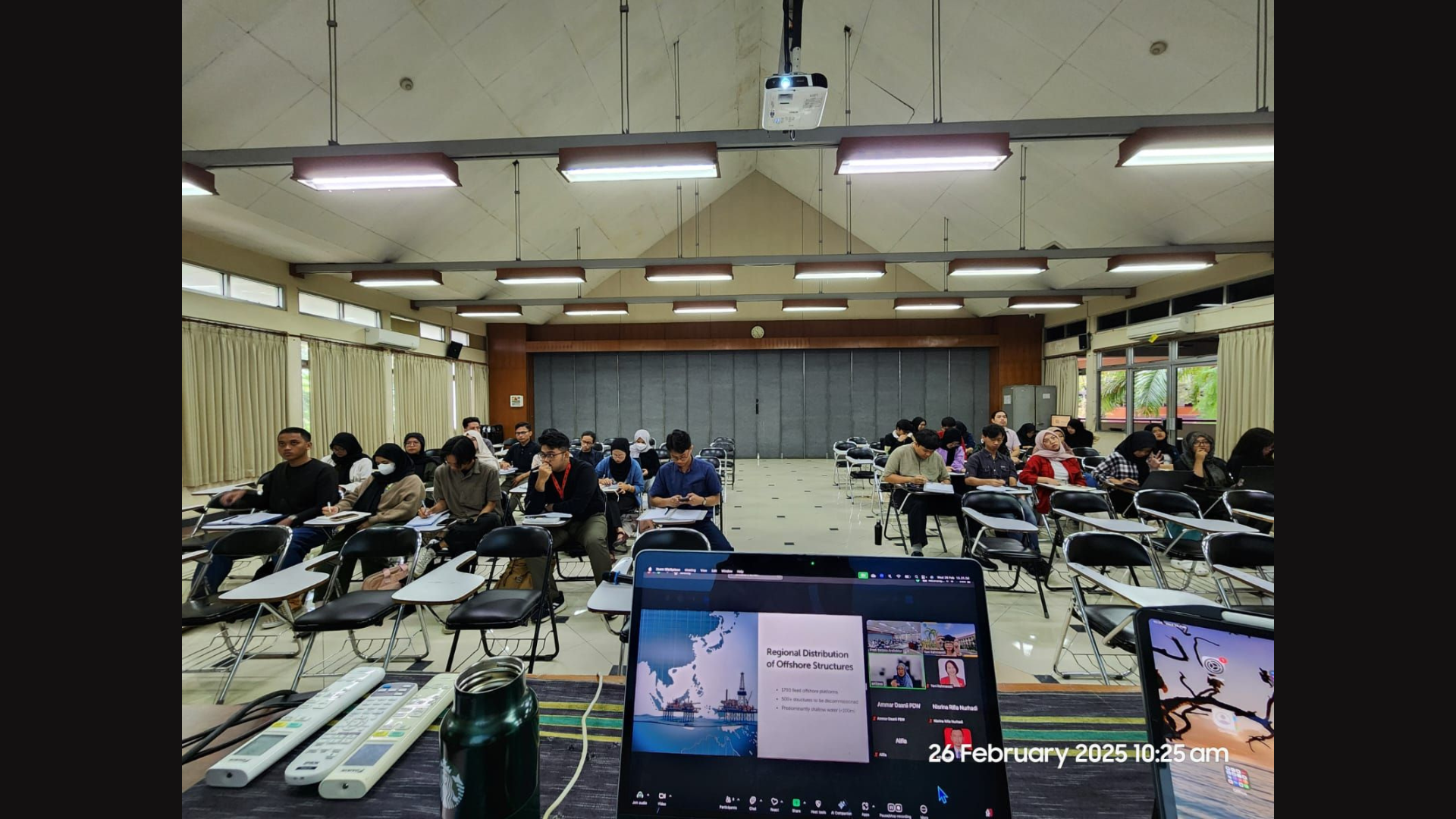
As their main assignment, students were challenged to design a revitalization proposal for an aging offshore platform located in Sarawak, Malaysia. This project provided them with a unique opportunity to apply what they had learned while sharpening their creativity and technical skills in an international context. Real-world case studies like this one help foster critical and forward-thinking mindsets, and often inspire students in developing their final-year projects.
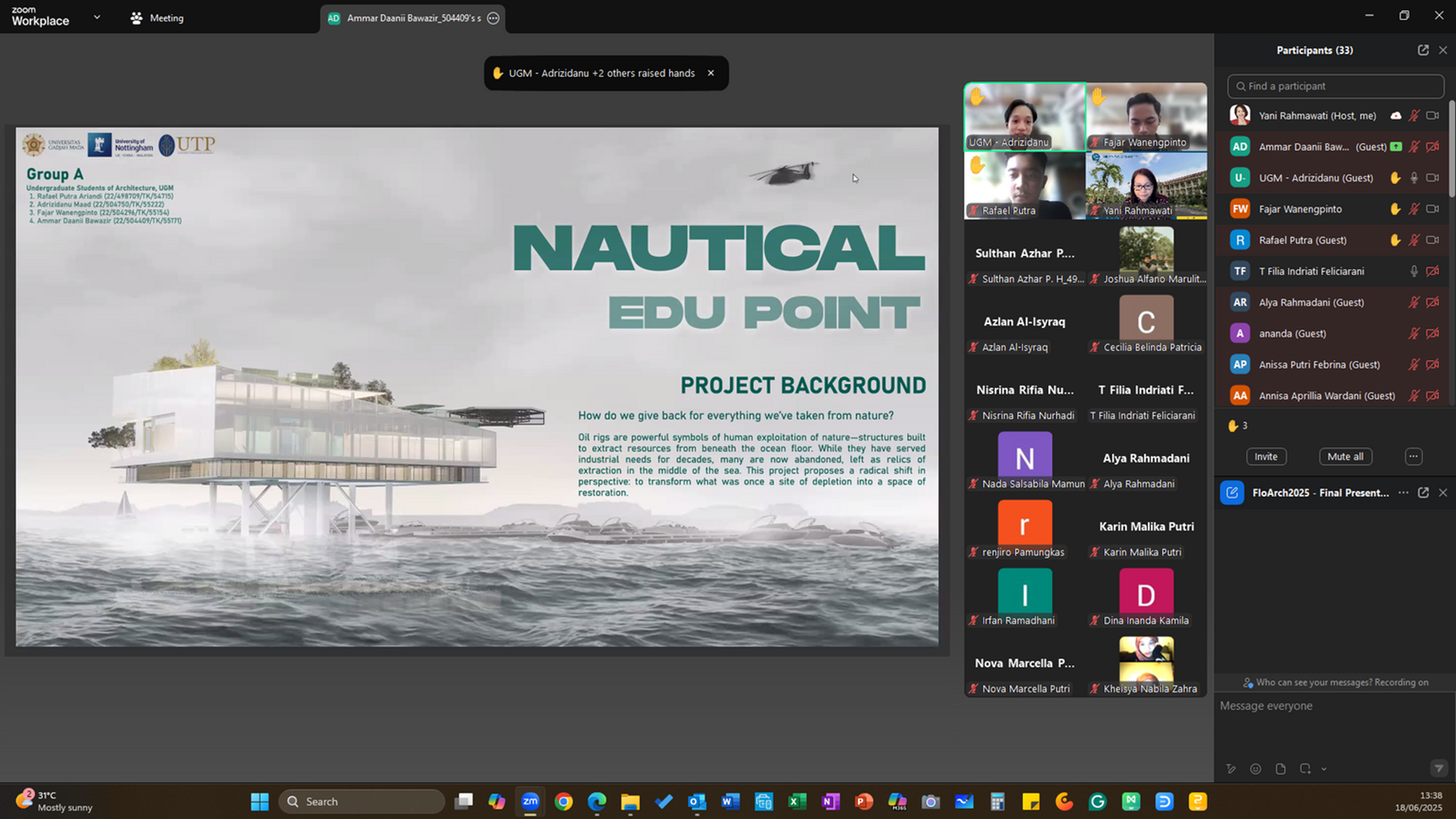
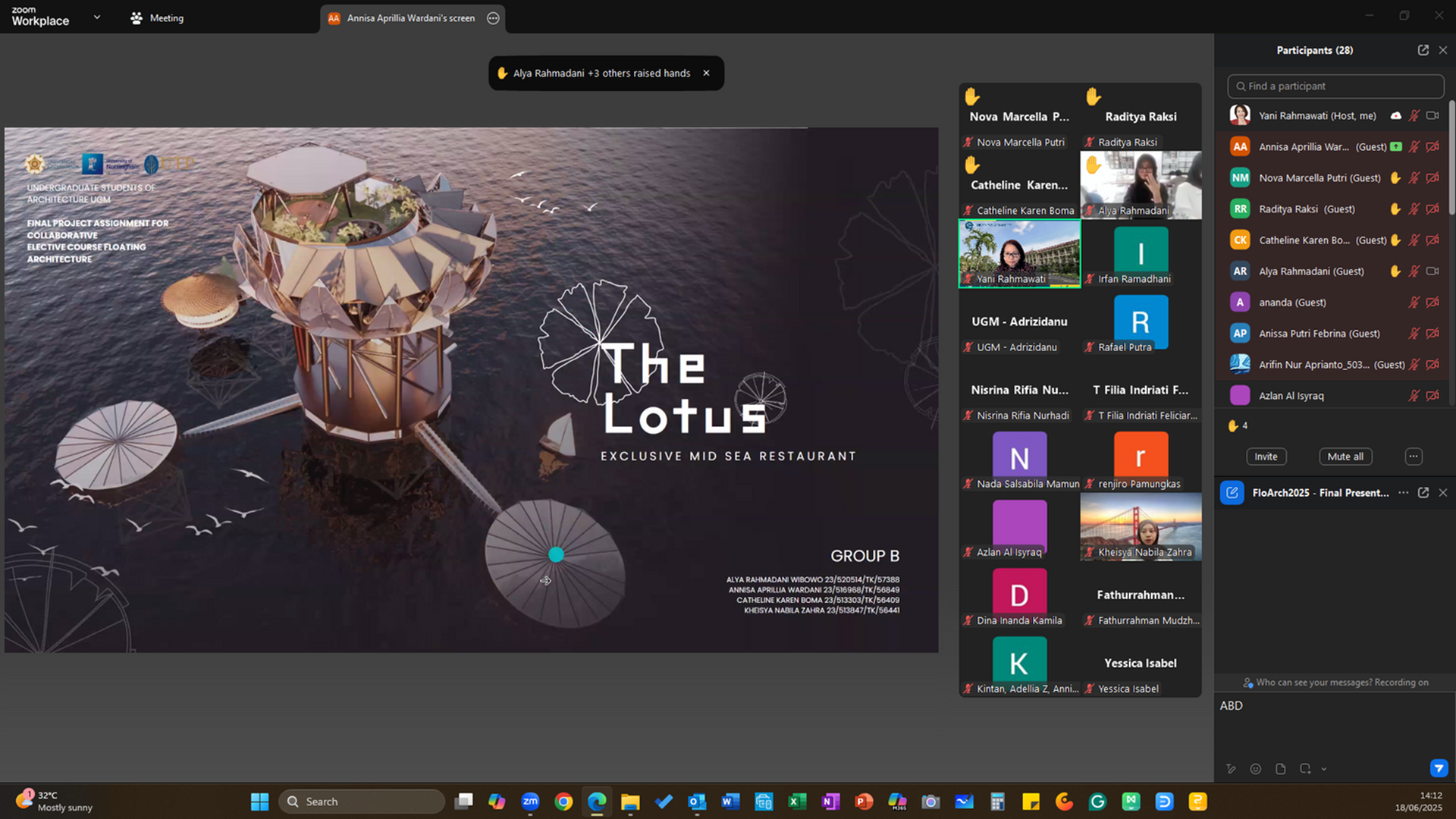
This initiative directly supports several key Sustainable Development Goals (SDGs), including SDG 11: Sustainable Cities and Communities, SDG 13: Climate Action, and SDG 14: Life Below Water. In addition, the interdisciplinary and international nature of the course also contributes to SDG 9: Industry, Innovation, and Infrastructure, and ultimately aligns with SDG 3: Good Health and Well-being. Through this innovative platform, UGM reaffirms its commitment to equipping students with global competencies and future-ready mindsets in response to evolving architectural challenges.
Reported by Rindi Dwi Cahyati
